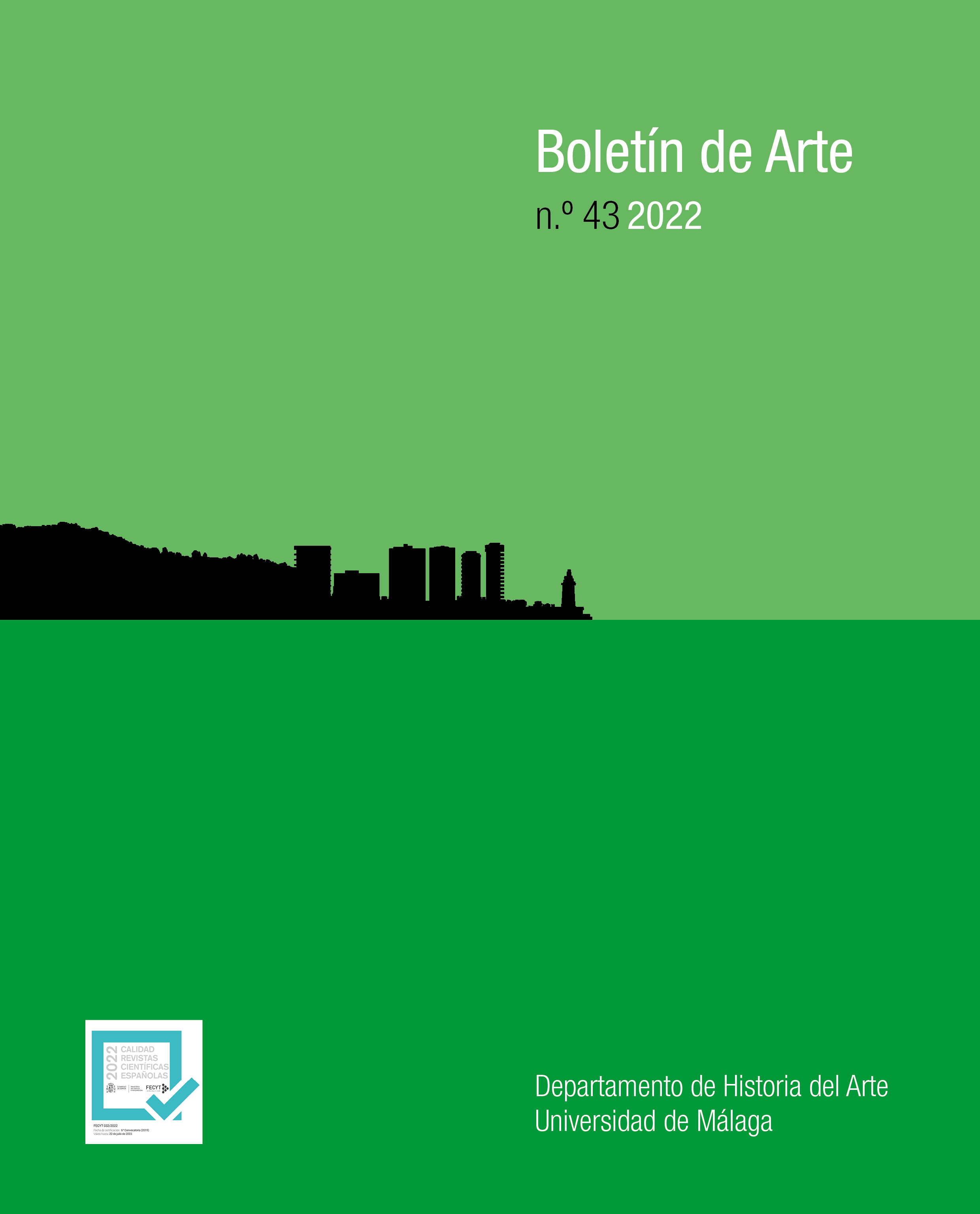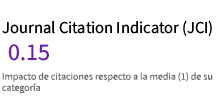Deconstructing an Image. Some Notes on the Iconography of Maternal «(un)Loving» on Surrealism
DOI:
https://doi.org/10.24310/BoLArte.2022.vi43.14319Keywords:
Motherhood, Woman, Iconography, Surrealism, Love, Affect theoryAbstract
The aim of this article is to revise the role of women and love in surrealism from another perspective: that of motherhood. For the surrealists, motherhood, inevitably opposed to desire, was a barrier to the absolute liberation of the passions, a liberation on which they relied in their revolutionary project. From the feminine point of view, the annulment of the subject that motherhood entailed was also an annulment of her desires and so a limitation for the development of artists. While ironizing on previous iconographies and establishing new formulas, the surrealist iconography of motherhood will be, above all, that of a deconstruction: that of the image presenting the mother as a synonym of female happiness.
Downloads
Metrics
Publication Facts
Reviewer profiles N/A
Author statements
Indexed in
-
—
- Academic society
- N/A
- Publisher
- Universidad de Málaga.
References
ARENAL GARCÍA, María Ángeles (2017), Magritte, el cazador de similitudes perdidas: ambivalencia de la feminidad como génesis de la dialéctica de la mirada, Universidad Complutense, Madrid. En: <https://eprints.ucm.es/id/eprint/17768/1/T34103.pdf> (fecha de consulta: 14-05-2021).
BATAILLE, Georges (2007), Mi madre, Tusquets Editores, Barcelona.
BEAUVOIR, Simone (1962), El segundo sexo, Editorial Siglo Veinte, Buenos Aires. En: <https://www.segobver.gob.mx/genero/docs/Biblioteca/El_segundo_sexo.pdf> (fecha de consulta: 16-05-2021).
BRETON, André (2006), Nadja, Cátedra, Madrid.
BRETON, André (2018), El amor loco, Alianza Editorial, Madrid.
BOLUFER PERUGA, Mónica y MORANT DEUSA, Isabel (1998), Amor, matrimonio y familia: la construcción histórica de la familia moderna, Editorial Síntesis, Madrid.
BUÑUEL, Luis (1930), L’âge d’or, Film, Vicomte de Noailles, Francia.
CABALLERO GUIRAL, Juncal (1995), «Mujer y surrealismo», Asparkia: Investigació feminista, n.º 5, pp. 71-82.
CABALLERO GUIRAL, Juncal (2002), La mujer en el imaginario surreal, Universitat Jaume I, Castelló.
DALÍ, Salvador y PARINAUD, André (1975), Confesiones inconfesables, Editorial Bruguera, Barcelona.
DUNCAN, Carol (2007), «Madres felices y otras nuevas ideas en el arte francés del siglo XVIII», en CORDERO REIMAN, Karen e SÁENZ, Inda (comps.), Crítica feminista en la teoría e historia del arte, Universidad Iberoamericana, Universidad Nacional Autónoma de México/Programa Universitario de Estudios de Género, Consejo Nacional para la Cultura y las Artes, México.
ENGELS, Friedrich (2017), El origen de la familia, la propiedad privada y el estado, Archivo Marx-Engels. En: (fecha de consulta: 20-05-2021).
ENGELS, Friedrich y MARX, Karl, (2011) La sagrada familia, Edición digital: Marxists Internet Archive. En: <https://www.marxists.org/espanol/m- e/1840s/sagfamilia/index.htm.> (fecha de consulta: 10-05-2022).
FER, Briony, BATCHELOR, David y WOOD, Paul (1999), Realismo, racionalismo y surrealismo, Akal, Madrid.
FOUCAULT, Michel (1976), Histoire de la sexualité, I, Gallimard, París.
FREUD, Sigmund (2020), Más allá del principio del placer, Akal, Madrid.
INSTITUTO FORT DA (s.f.) Qué quiere decir Fort-da. En: <https://www.institutofort-da.com/que-quiere-decir-fort-da> (fecha de consulta: 20-05-2022).
IRIBAS RUDÍN, Ana (2004), «Salvador Dalí desde el psicoanálisis», Arte, Individuo y Sociedad, vol. 16, pp. 19-47
LABANYI, Jo (2016), «Pensar los afectos», conferencia dictada en el Centre de Cultura Contemporània de Barcelona el 15 de marzo de 2016. En: <https://www.cccb.org/es/multimedia/videos/jo-labanyi/223394> (fecha de consulta: 16-04-2021).
LACAN, Jacques (1978), La familia, Editorial Argonauta, Barcelona.
LAFARGUE, Paul (1886), «Le matriarcat. Etude sur les origines de la famille». Le Socialiste. En: <https://www.marxists.org/francais/lafargue/works/1886/10/matriarcat.html> (fecha de consulta: 13-06-2021).
LUQUIN CALVO, Andrea (2009), Remedios Varo. El espacio y el exilio, Instituto Universitario de Investigación de Estudios de Género de la Universidad de Alicante, Alicante.
MAHON, Alyce (2009), Surrealismo, Eros y Política, 1938-1968, Alianza Editorial, Madrid.
MAHON, Alyce (2018), Dorothea Tanning. Detrás de la puerta, invisible, otra puerta, Artes Gráficas Palermo, Madrid. En: <https://www.museoreinasofia.es/sites/default/files/publicaciones/catalogosPDF/11_dorothea_tanning._castellano.mncars.imprenta.pdf> (fecha de consulta: 19-05-2022).
PEARL, Lydie (2002), L’imaginaire de la séparation de la mère chez Dalí. Imaginaire et Inconscient, n.º 8, pp. 83-100. En: <http://dx.doi.org/10.3917/imin.008.0083.> (fecha de consulta: 20-06-2021).
PUJANTE, David (2017), Eros y tánatos en la cultura occidental. Un estudio de tematología comparatista, Calambur, Barcelona.
REVILLA, Federico (2007), Diccionario de iconografía y simbología, Cátedra, Madrid.
ROUSSEAU, Jean Jacques (1786), Les rêveries du promeneur solitaire, Édition du groupe Ebooks libres et gratuits. En <https://ebooks-bnr.com/ebooks/pdf4/rousseau_reveries_promeneur_solitaire.pdf> (fecha de consulta: 20-04-2021).
SADE, Marqués de (2016), Filosofía en el tocador, Austral, Barcelona.
SPECTOR, Jack (2003), «La mujer surrealista y el otro colonial», en Arte y escritura surrealista (1919-1939), Síntesis, Madrid, pp. 299-352.
SOUSA PARDO, Carmen (2021), «La lente surrealista sobre Violette Nozière», en GUILLÉN, Esperanza (2021), Pasiones ocultas, amores fatales. Imágenes del deseo en la cultura contemporánea, Editorial Universidad de Granada, Granada, pp. 149-180.
Downloads
Published
How to Cite
Issue
Section
License
Todos los contenidos publicados en la revista Boletín de Arte están sujetos a la licencia Creative Commons Reconocimento-NoComercia-Compartirigual 4.0 cuyo texto completo puede consultar en <http://creativecommons.org/licenses/by-nc-sa/4.0>

Los/as autores/as cuyas contribuciones sean aceptadas para su publicación en esta revista conservarán el derecho no exclusivo de utilizar sus contribuciones con fines académicos, de investigación y educativos, incluyendo el auto-archivo o depósito en repositorios de acceso abierto de cualquier tipo.
La edición electrónica de esta revista esta editada por la Editorial de la Universidad de Málaga (UmaEditorial), siendo necesario citar la procedencia en cualquier reproducción parcial o total.












4.png)
